From 17 January, 2005
The Rotunda, Aston Webb Building
University of Birmingham, Edgbaston, Birmingham
“This exhibition is a selection of drawings from the last six years taken from different times and phases in my work. Put together, new dialogues, counterpoints and cross references appear. They are linked by the common thread of an interest in the figure in the landscape and in the concept of the pastoral with its elusive associations of memory, nostalgia, celebration and loss. The intention is to make works which attempt to convey the layers of meaning and subliminal associations which are present in our perceptions of landscape.
“My sources are often either literary or art historical, or both as in Drawing after William Blake which is a reworking of a tiny woodcut by Blake forming part of his series illustrating Virgil’s Eclogues. A painting by Balducci of the Metamorphosis of Daphne is the origin of my drawing of Daphne, but the model is contemporary. Literary sources occur in Abbess of the Bees, taken from a line in Ted Hughes’s Birthday Letters in which he recalls Sylvia Plath’s beekeeping activities, and Sweet Tenor Bull is from Briggflatts, another autobiographical poem by Basil Bunting but these are blended with my own memories of beekeeping and old photographs of my grandfather’s pedigree bulls. These are also the source of the drawing Riding the Red Poll Bull which is actually of my aunt as a young girl in the 1930’s. The early death of her son, a farmer all his life, is remembered in the drawing Death of a Farmer – his geese wander through a field where heaps of straw are burning. My own two sons appear in The Fourth Element, Fathom 1 and Fathom 2 in drawings which are about water and its sources – rain, sea, river – with intentional echoes of images of baptism.
“Another drawing The Spanish Horse is based on a chance encounter in Northern Spain. Finally two small landscape drawings Landscape with Smoke and Landscape with Magpies refer respectively to the place where I now live (the Malverns) and my childhood landscape on the Isle of Wight.”
Bridget Macdonald
January 2005
“Within the silence, Bridget Macdonald’s work speaks with a firm voice. The artist weaves her magic with considered composition and gesture, and, significantly, the abolition of time. In abolishing time, or perpetuating a moment, she is part of a five thousand year old tradition of picture making. Like the artists of surviving ancient Egyptian tomb-portraits, Macdonald seemingly makes her Abbess of the Bees gaze out at us across centuries; her Daphne, caught during transformation into a laurel tree, is poised on a threshold between the individual and the ubiquitous, between the noisy brevity of human life and the silent eternity of vegetation.”We are immediately struck, on coming upon Bridget Macdonald’s display of drawings in the Rotunda at the University, by their inner silence. Bold and assertive though the figures in the drawings may be, they nevertheless express their power by reserving themselves, and clothing themselves in silence. Two young men stand in water, as in the iconography of baptism, in silence. A girl trots out gingerly on a powerful bull, in silence. A naked figure pulls at a garden roller, in silence. Even the geese are silent – geese are nature’s fire alarms, but not in Death of a Farmer.
“Bridget Macdonald uses her sources, which she has described in her statement, with care and consideration. They are the spark-plugs of her imagination, the starting point for a long journey into the profound imagery she puts before us. She knows, as W. H. Auden put it: ‘About suffering they were never wrong, / The Old Masters: how well they understood / Its human position.”
James Hamilton
University Curator
January 2005
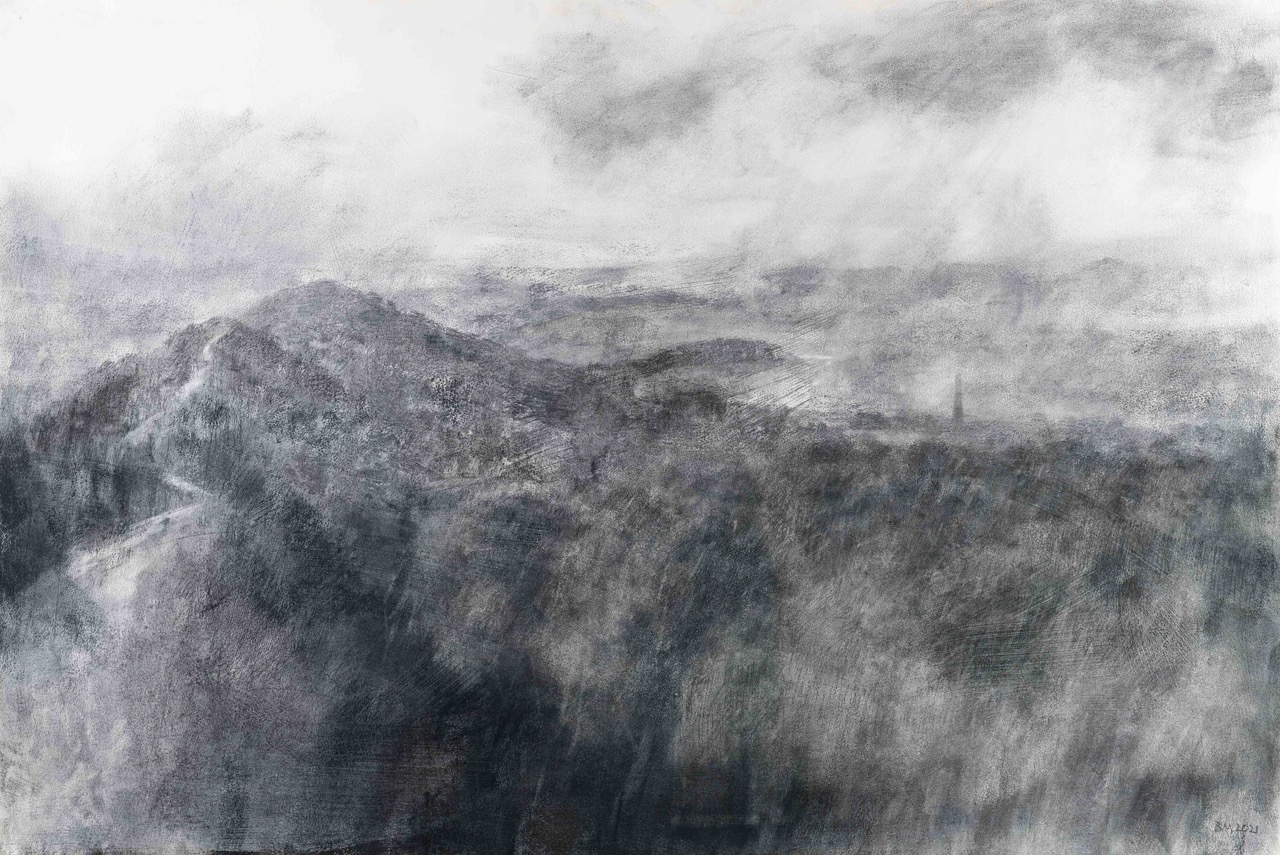
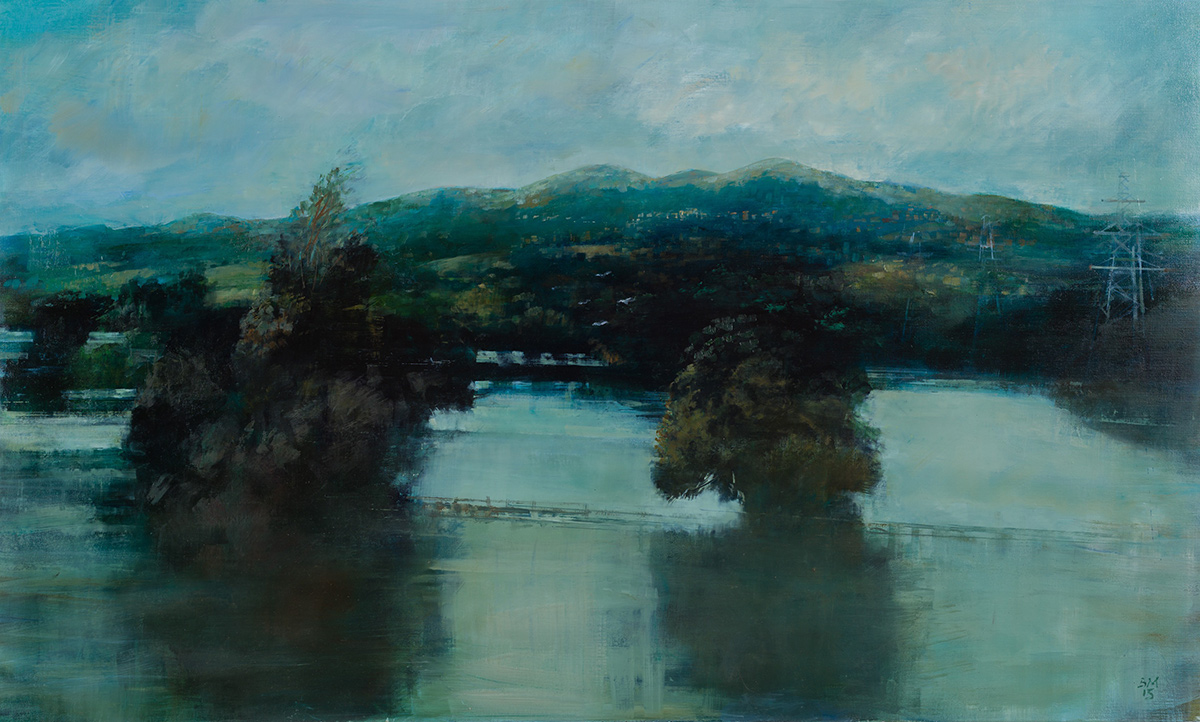
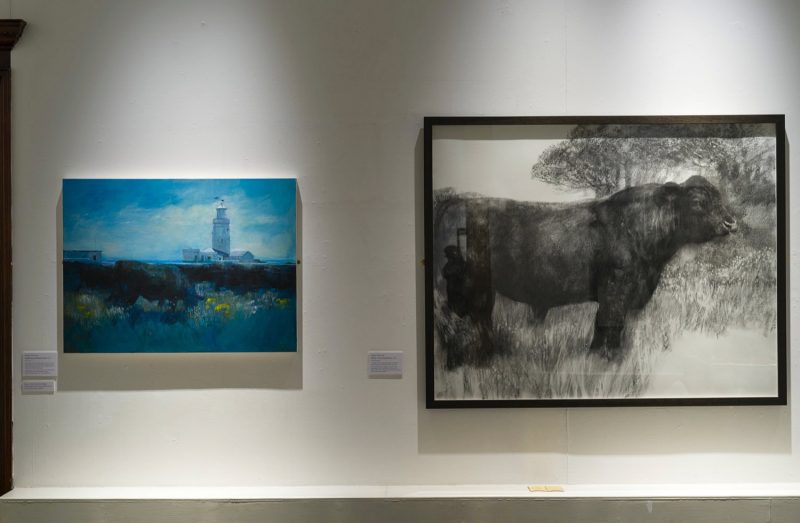
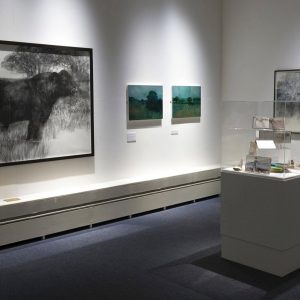
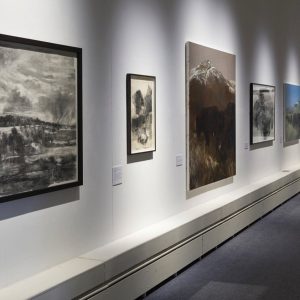
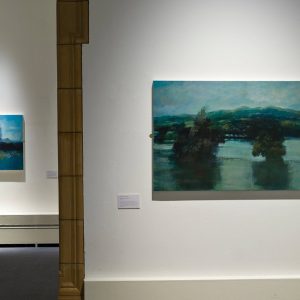
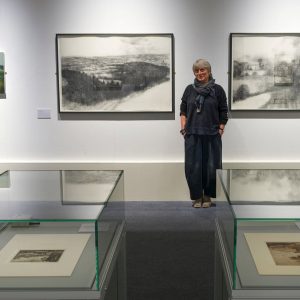
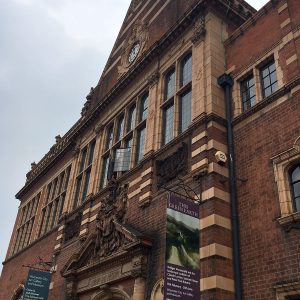
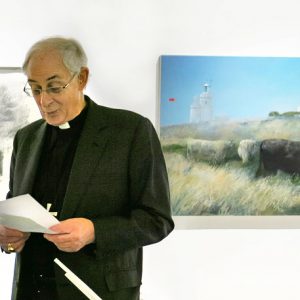
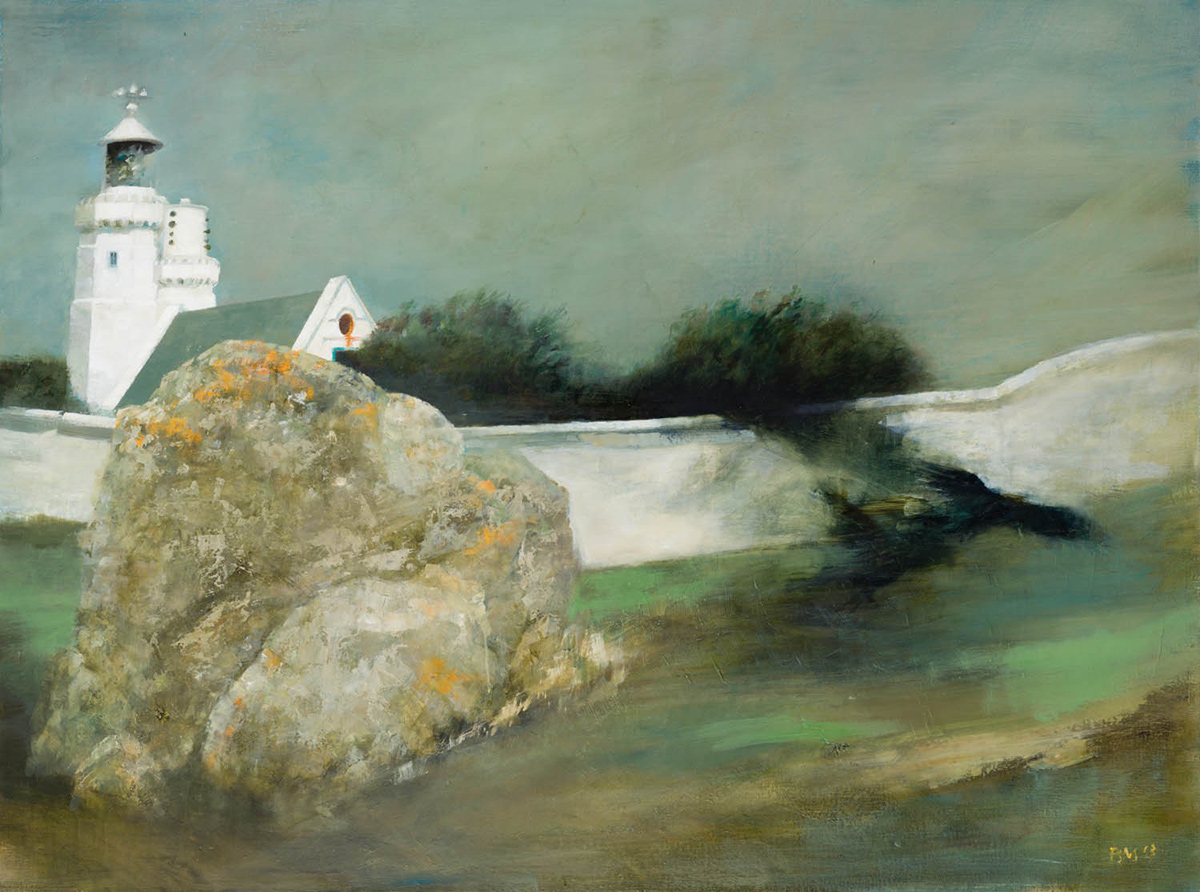
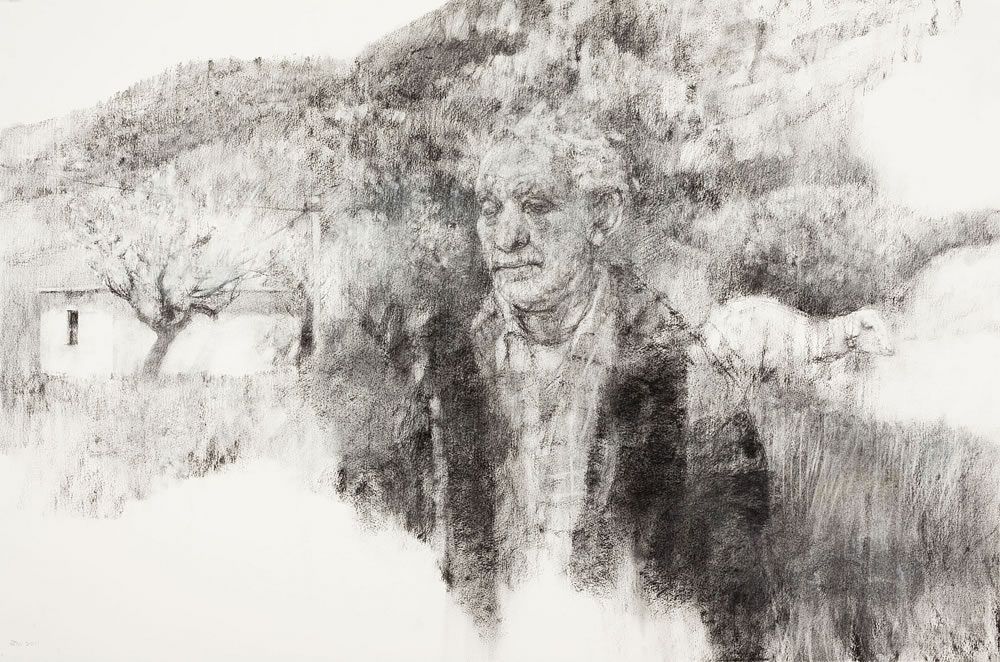
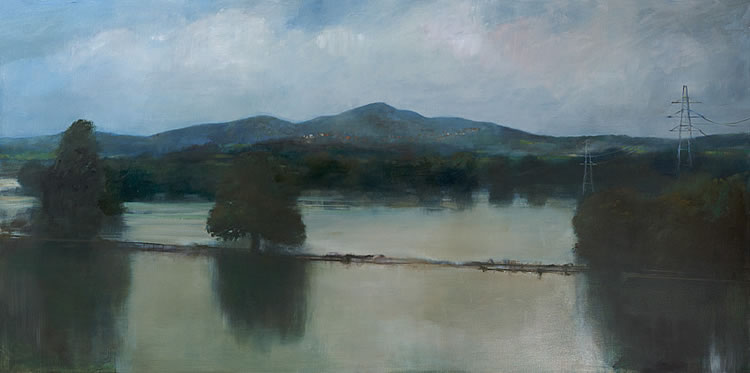
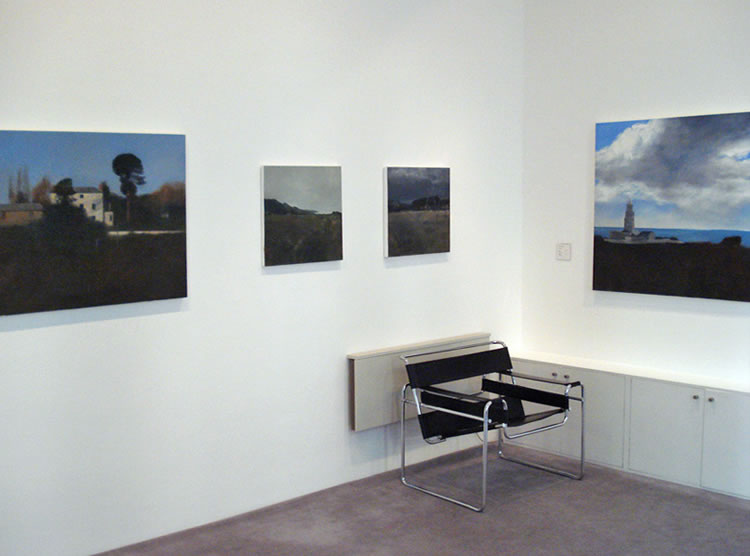
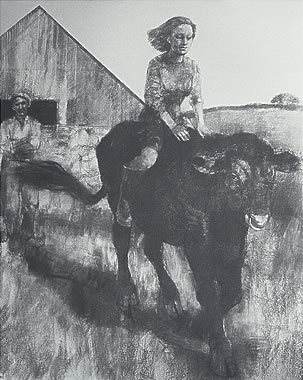 From the moment she began exhibiting her beautiful, assured drawings twelve years ago, Bridget Macdonald has attracted the attention of museum curators, collectors of drawings, and people with a love of poetry. In both her paintings and the charcoal drawings, she has tended to focus on the figure in landscape. A retrospective exhibition of Macdonald’s work at Wolverhampton Art Gallery in 1998 revealed an artist of great substance, capable of integrating autobiography and myth to create images that are suffused with memory and quiet mystery.
From the moment she began exhibiting her beautiful, assured drawings twelve years ago, Bridget Macdonald has attracted the attention of museum curators, collectors of drawings, and people with a love of poetry. In both her paintings and the charcoal drawings, she has tended to focus on the figure in landscape. A retrospective exhibition of Macdonald’s work at Wolverhampton Art Gallery in 1998 revealed an artist of great substance, capable of integrating autobiography and myth to create images that are suffused with memory and quiet mystery.